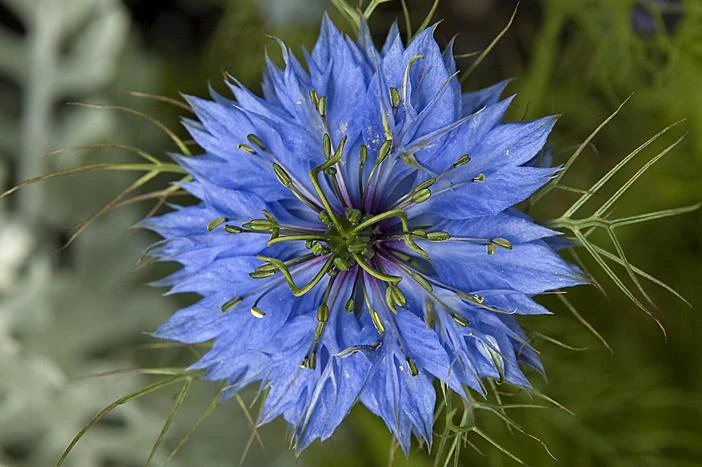Black Caraway
(Nigella sativa)
Black Caraway (Nigella sativa)
/
/

digital cat
CC BY 2.0
Image By:
digital cat
Recorded By:
Copyright:
CC BY 2.0
Copyright Notice:
Photo by: digital cat | License Type: CC BY 2.0 | License URL: https://creativecommons.org/licenses/by/2.0/ | Uploader: digital cat | Publisher: Flickr




























Estimated Native Range
Climate Requirements
| • Precipitation | 0" - 91" |
| • High Temp. | 57°F - 109°F |
| • Low Temp. | -10°F - 73°F |
Summary
Nigella sativa, commonly known as black caraway, black cumin, or kalonji, is an annual herb native to the Mediterranean region, including parts of southern Europe, northern Africa, and southwest Asia. It typically grows to a height of 8-12 inches (20-30 centimeters) with a width of 4-8 inches (10-20 centimeters). The plant has finely divided, feathery leaves and delicate flowers that bloom from late spring to early summer. The flowers are usually pale blue to white and are considered quite showy due to their unique shape and prominent stamens. After flowering, it produces distinctive seed pods that contain the edible black seeds.
Nigella sativa is valued for its seeds, which are used as a spice in various cuisines, particularly in Middle Eastern and South Asian dishes. The seeds have a slightly bitter taste and are often used in bread, curries, and pickles. In addition to its culinary uses, black cumin is also appreciated for its medicinal properties and has been used in traditional medicine for a variety of ailments. It is relatively easy to grow, preferring full sun to partial shade and well-drained soil. It is drought-tolerant once established and requires minimal maintenance. In cultivation, it can be used as a border plant or in herb gardens. However, it can self-seed prolifically, which may be considered a problem in some gardens.CC BY-SA 4.0
Nigella sativa is valued for its seeds, which are used as a spice in various cuisines, particularly in Middle Eastern and South Asian dishes. The seeds have a slightly bitter taste and are often used in bread, curries, and pickles. In addition to its culinary uses, black cumin is also appreciated for its medicinal properties and has been used in traditional medicine for a variety of ailments. It is relatively easy to grow, preferring full sun to partial shade and well-drained soil. It is drought-tolerant once established and requires minimal maintenance. In cultivation, it can be used as a border plant or in herb gardens. However, it can self-seed prolifically, which may be considered a problem in some gardens.CC BY-SA 4.0
Plant Description
- Plant Type: Herb
- Height: 0.5-2 feet
- Width: 0.5-1 feet
- Growth Rate: Moderate
- Flower Color: Blue, White
- Flowering Season: Spring, Summer
- Leaf Retention:
Growth Requirements
- Sun: Full Sun
- Water: Low
- Drainage: Medium, Fast
Common Uses
Bee Garden, Butterfly Garden, Edible*Disclaimer: Easyscape's listed plant edibility is for informational use. Always verify the safety and proper identification of any plant before consumption., Low Maintenance
Natural Habitat
Native to the Mediterranean region, including parts of southern Europe, northern Africa, and southwest Asia
Other Names
Common Names: Fennel Flower, Black Caraway, Nutmeg Flower, Roman Coriander
Scientific Names: Nigella sativa, Nigella cretica, Nigella indica, Nigella sativa var. cretica, Nigella truncata
GBIF Accepted Name: Nigella sativa